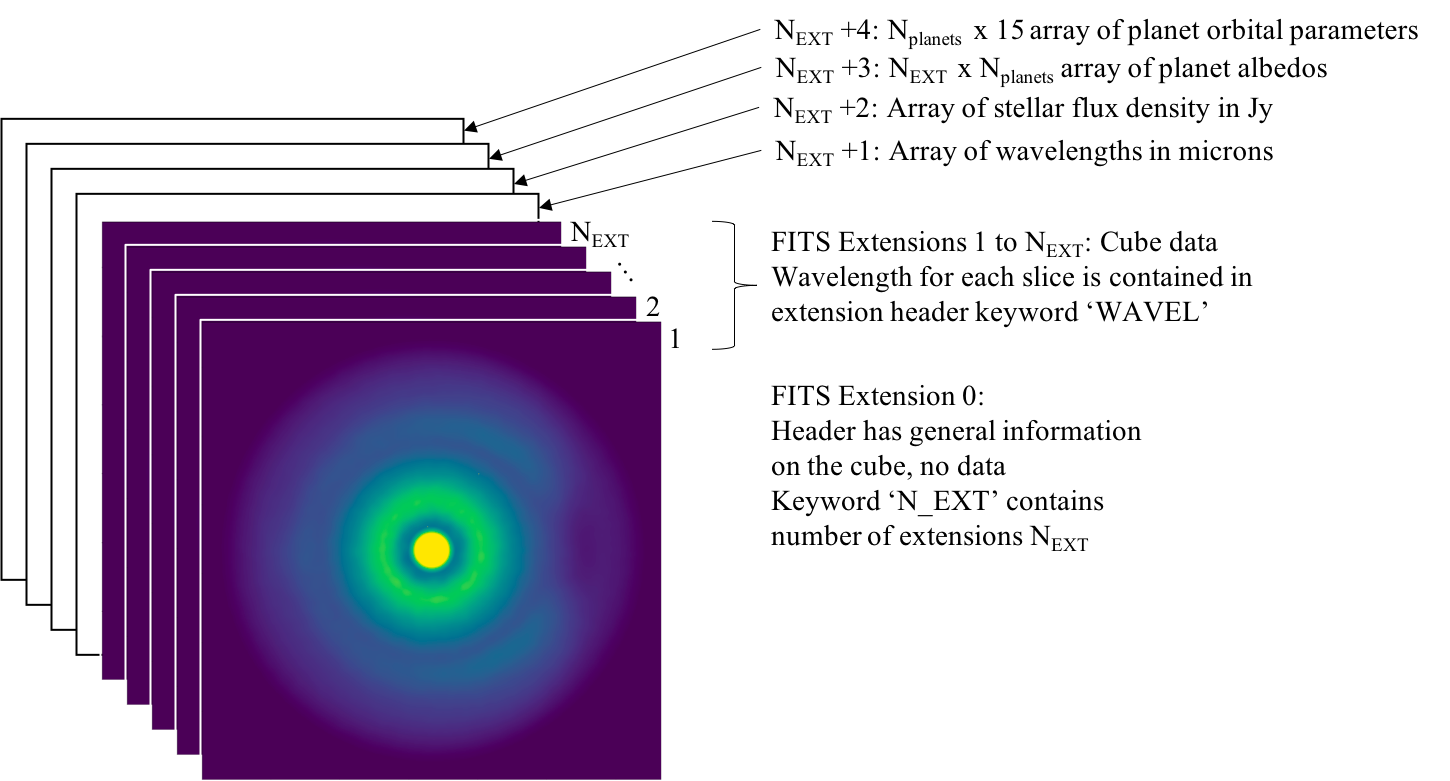
Introduction Further Details Model Downloads Simulated Data
Haystacks Model Downloads & Other Codes
Haystacks cube structure and assembly
The Haystacks cubes are organized as shown in the figure below. The slices of the cubes are spread across multiple extensions to allow for optimal memory management by the user
(thus one can open only the desired slices and not the entire cube at once).
 The first FITS extension contains only a header with cube and simulation parameters. In particular, it contains the number of extensions "N_EXT" in which there is actual cube data. Each extension from 1 to N_EXT corresponds to the Haystacks scene at a given wavelength. The wavelength for each slice/extension is found in the header under keyword "WAVEL". Extension N_EXT+1 contains an array with all the wavelengths. Extension N_EXT+2 contains an array with the stellar spectrum. Extension N_EXT+3 contains an array with the planet albedo spectra that were used for the simulation. Extension N_EXT+4 contains an array with orbital parameters of each planet. For Python instructions on how to use the Haystacks cubes, please refer to the notebook here. This includes reading the headers, reading the data, and adding the galactic and extragalactic backgrounds. |
Modern Solar System spectral image cubes
Haystacks cubes for three different inclinations:A shell script to download all of the modern haystacks cubes can be found here.
Archean Solar System spectral image cubes
Haystacks cubes for three different inclinations:A shell script to download all of the archean haystacks cubes can be found here.
Background stars
Download the background star spectra for all cubes here. This is used to randomly add stars in the field of view of the Haystacks planetary system cube. To save space, the background star spectra are indexed using the "Cube index". Please refer to the the Haystacks notebook for instructions on how to add stars to the corresponding Haystacks cube.Extragalactic background cubes
Please see the notebook to learn how to add the cubes containing extragalactic background sources to the Haystacks cubes. Note that the background cubes represent a larger field of view, and have a larger pixel size, so some massaging is required.| Cube index | Galaxies |
|---|---|
| 0 | 0.30-0.37um |
| 1 | 0.37-0.46um |
| 2 | 0.46-0.57um |
| 3 | 0.57-0.70um |
| 4 | 0.70-0.87um |
| 5 | 0.87-1.07um |
| 6 | 1.07-1.32um |
| 7 | 1.32-1.63um |
| 8 | 1.64-2.02um |
| 9 | 2.02-2.50um |
A shell script to download all of the background haystacks cubes can be found here.

Source code
| The source code of Haystacks can be found on Github here. However, it requires 2 more IDL modules and a large amount of data files, which will prevent the user from running the code as-is. |


